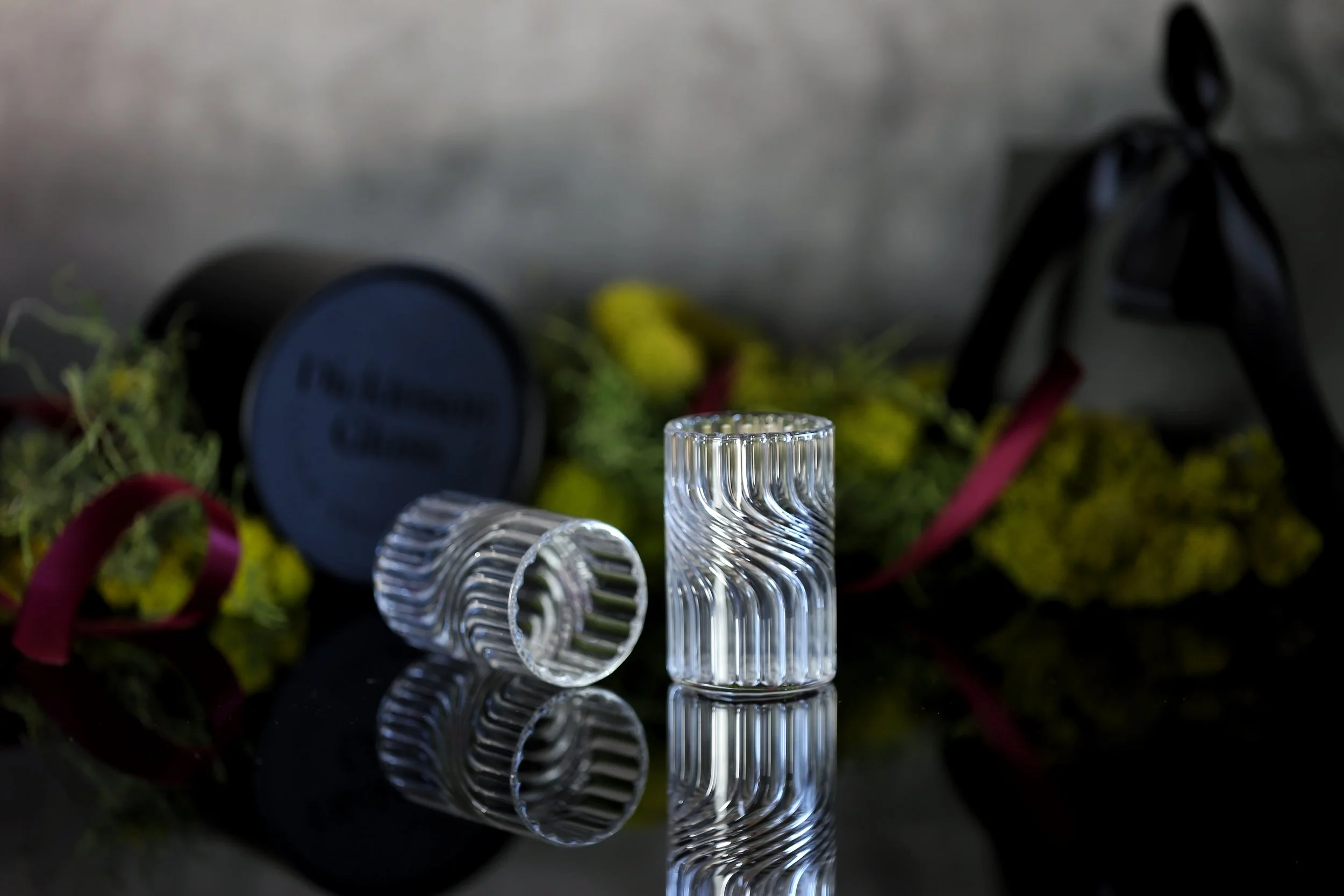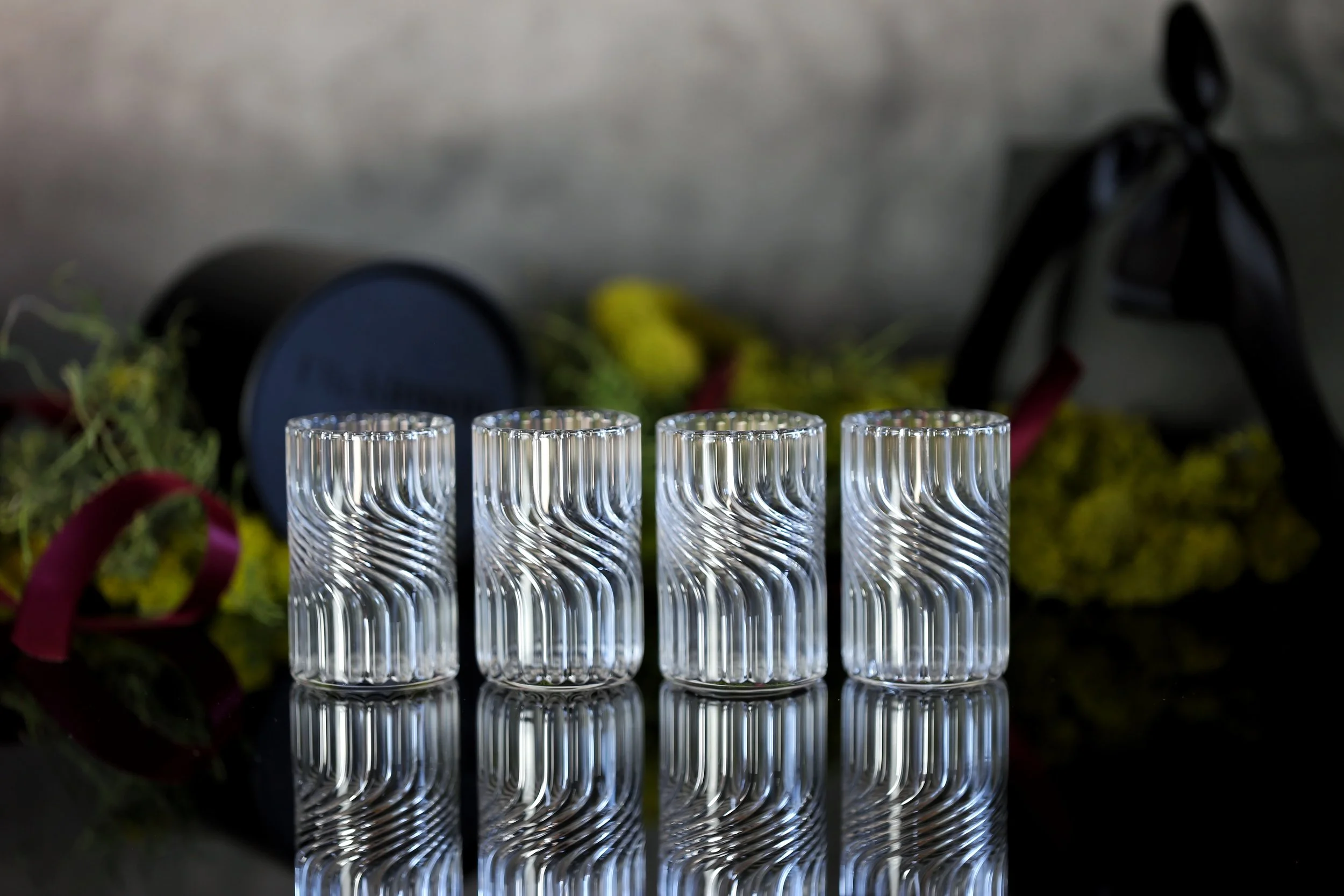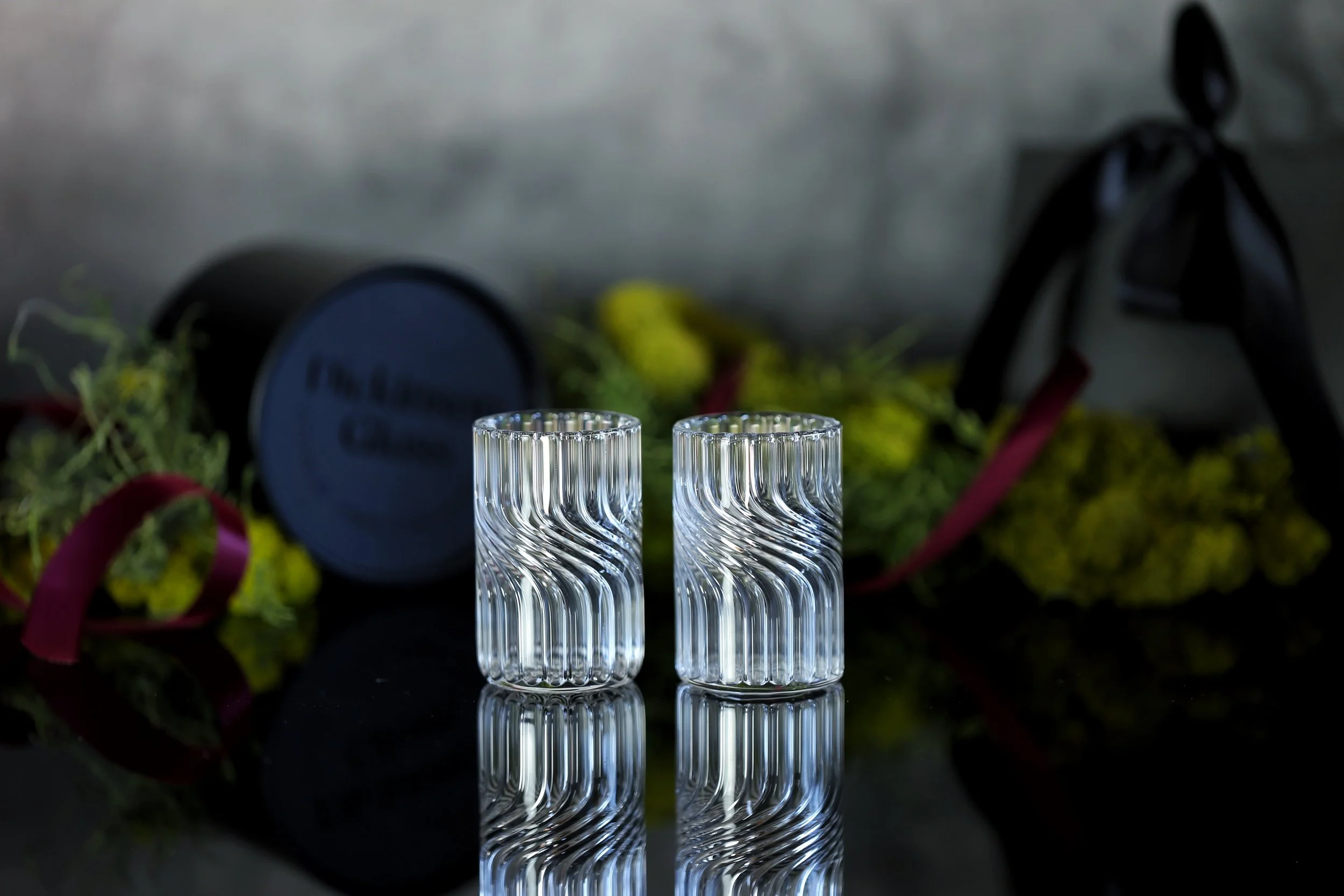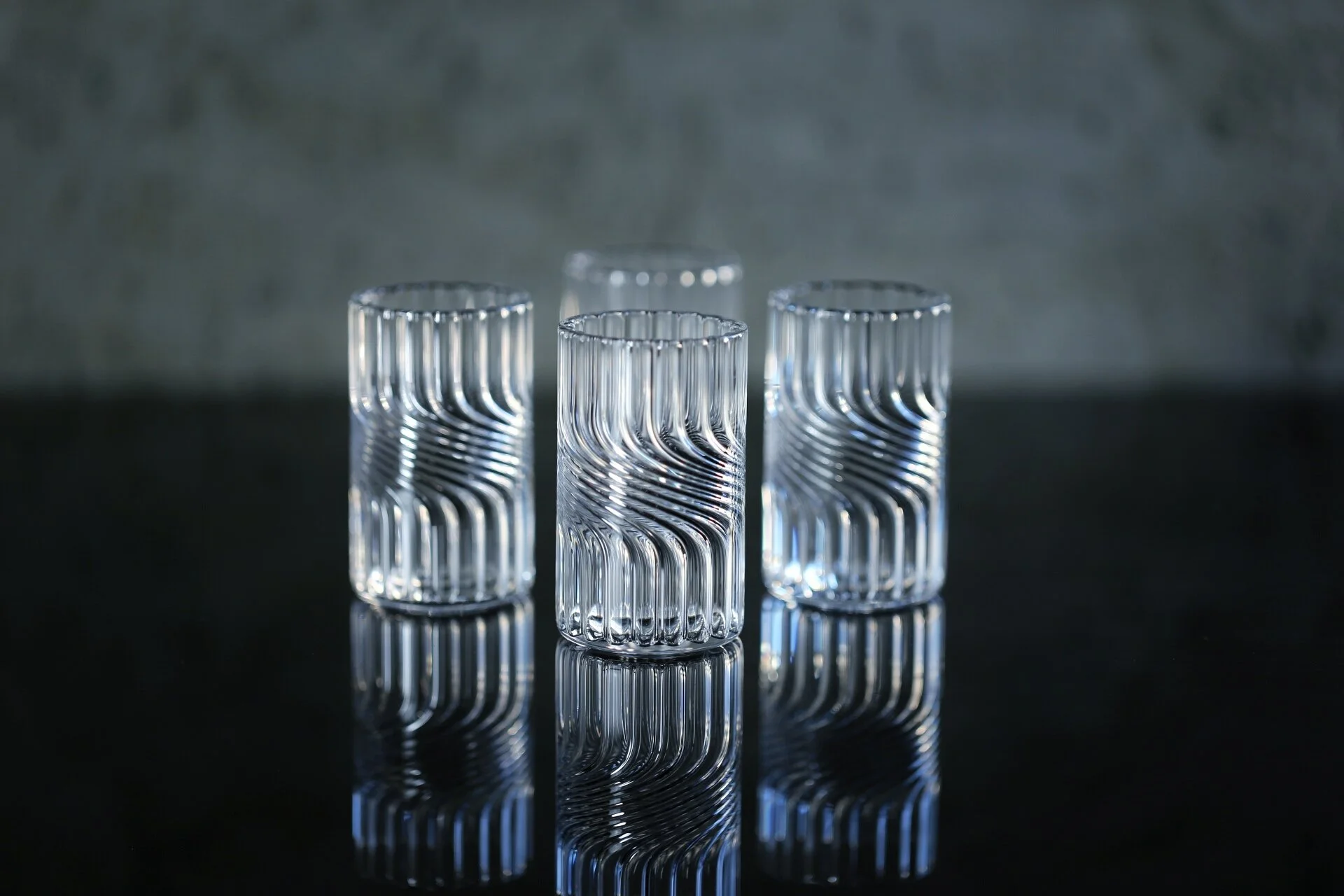Borosilicate Shot Glass







Borosilicate Shot Glass
Each glass is hand blown using traditional flameworking techniques with borosilicate glass. Spiral glass tubing creates contemporary patterns that are unique to each glass, while remaining uniform in shape and size.
2.5” height | 1.5” diameter and holds approximately 2 oz. Dishwasher safe.
All designs are individually hand-crafted as orders are received.
Borosilicate Glass is more durable and scratch resistant than Crystal or Soda-Lime Glass
How It’s Made:
Michael Dickinson uses the highest quality borosilicate glass for its superior clarity, durability, and strength.
Borosilicate glass has a very low coefficient of thermal expansion, which allows it to be resistant to thermal shock and offer premier durability compared to other glassware available. Its clarity and strength are of the highest quality, making it a wonderful choice not only for wine glasses, barware, and cookware, but for use in laboratory or industrial manufacturing. Because borosilicate glass requires higher temperatures to shape and form, the resulting product is notably stronger and is much less likely to shatter than regular glass. It is routinely used in chemistry labs and commonly goes by the name “Pyrex”, offering durability and protection from cracking at high temperatures.
At Dickinson Glass Studio and Showroom, Michael creates his borosilicate glass pieces using a technique known as flameworking. “The flameworking technique probably dates back to ancient times (500 BC). It was certainly known in France and Venice in the 15th century, and has been practiced ever since. Historically, the source of the flame was an oil or paraffin lamp. Today, flameworkers use torches fueled by various gases and oxygen” (Corning Museum of Glass). In our studio, we melt cold glass rods and tubes beneath the flame at a temperature of 5000°F supplied by propane and oxygen from our High Volume Oxygen clean oxygen generating system. Take a class or tour the studio to learn more about how glass is made!
“Corning Museum of Glass.” Flameworking Demo | Corning Museum of Glass, www.cmog.org/glassmaking/demos/flameworking.